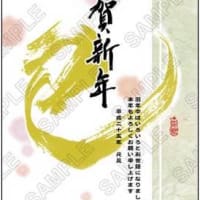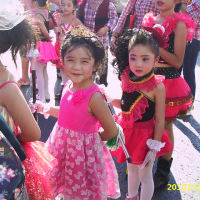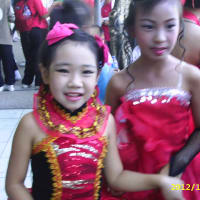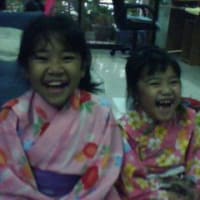The Yomiuri Shimbun (Apr. 30, 2010)
Reinvigorate traditional performing arts
歌舞伎座新築へ 伝統芸能を発展させる礎に(4月29日付・読売社説)
The stage on which many fine kabuki actors performed some of their greatest shows is about to be reborn. The curtain will come down on the antiquated Kabuki-za theater in Ginza, Tokyo, with a closing ceremony Friday. The theater will be torn down and rebuilt.
新歌舞伎座のイメージ図 数々の名優たちの足跡を刻んだ舞台が生まれ変わる。東京・銀座の歌舞伎座が老朽化に伴う建て替えのため、明日の閉場式を最後に休場する。
The Kabuki-za, built with a grand architectural style evocative of the Azuchi-Momoyama period (1568-1600), has been a cultural space and distinctive landmark in central Tokyo. Many people were surely saddened to bid farewell to the venerable theater.
壮麗な桃山風建築の劇場は、都心にあって異彩を放つ文化空間でもあった。名残を惜しむ人も多いことだろう。
The first Kabuki-za theater in Ginza was built in 1889. After the theater burned down several times, the present structure opened its doors in 1951.
最初の歌舞伎座は1889年(明治22年)に誕生した。焼失を繰り返したが、1951年に現在の建物がオープンした。
A new Kabuki-za building will be completed in three years as a multifunctional facility that will house a new four-story kabuki theater and a 29-story office building.
新歌舞伎座は、4階建ての新劇場と29階建てのオフィス棟の複合施設として3年後に完成する。
Farewell performances at the theater, which lasted for 16 months, were filled to overflowing every day.
16か月に及んだ歌舞伎座の「さよなら公演」は、連日超満員だった。
===
Interest reignited
Kabuki has entered a new phase of prosperity. Public performances are being well received at Shinbashi Enbujo in Tokyo, at the Minami-za in Kyoto, and at the Shochiku-za in Osaka.
歌舞伎は新たな隆盛期を迎えている。新橋演舞場や京都南座、大阪松竹座の公演も順調だ。
This marks a turnaround from about 30 to 40 years ago, when kabuki was in a slump. At that time, some people harbored grave doubts about kabuki's future.
30~40年前には、歌舞伎の存続が危ぶまれる低迷期もあった。
Since the mid-1980s, however, kabuki has regained popularity. Interest in kabuki has been rekindled by performances commemorating an actor's succession to the stage name Ichikawa Danjuro--the name of the person considered to be the founder of kabuki performed in Edo (present Tokyo)--and attempts to create new styles of kabuki, starting with "super kabuki," a combination of traditional kabuki with contemporary playwrights' work and modern stage technology.
80年代後半以降、江戸歌舞伎の元祖と言える名跡、市川団十郎の襲名披露公演の成功や、スーパー歌舞伎に始まる新しい試みなどにより人気は回復していった。
Since the 1970s, the National Theatre in Tokyo has devoted considerable resources to training kabuki actors and musicians. Those who earned their stripes at the theater are now supporting the foundations of kabuki.
70年以降、国立劇場でも俳優や楽器奏者らの養成に順次取り組んできた。研修修了生は、今日の歌舞伎の基盤を支えている。
Everyday terms such as "nobetsu makunashi" (without intermission), "oozume" (the final act), and "ohako" (one's specialty) originated in kabuki. This brings home again the depth of Japanese language and the aesthetic sense of the Japanese people.
日常の会話で使われる「のべつ幕なし」「大詰め」「おはこ(十八番)」などの言葉は、歌舞伎に由来したものだ。日本語の奥行きの深さや、日本人の美意識を改めて発見することが出来る。
===
Laying the groundwork
Audiences can feel the actors' powerful performances or marvel at the elaborate stage sets all the more when they watch a show at the theater. If kabuki is performed at more local theaters while the Kabuki-za is being rebuilt, the traditional art's fan base will widen even further.
迫力のある演技や趣向を凝らした舞台装置などは、劇場でこそ実感出来る。歌舞伎座の工事中に地方公演が増えるならば、ファンの幅はさらに広がるだろう。
Such traditional performing arts as kabuki, noh plays and ningyo-joruri bunraku puppetry are registered on UNESCO's list of intangible cultural heritages. Although kabuki's popularity stands out among these performing arts, the origins and themes of all three are inextricably linked.
歌舞伎や能楽、人形浄瑠璃文楽などは、国連教育・科学・文化機関(ユネスコ)の無形文化遺産代表一覧リストに記載されている。歌舞伎の人気が突出しているが、成り立ちやテーマにおいて、三つの芸は深く関(かか)わりあっている。
The revised Fundamental Law of Education stipulates that educators should instill a respect for Japan's tradition and culture in their students. Accordingly, the official guidelines for middle school teaching, for instance, say, "It is important to stimulate students' interest" in such classic performing arts as noh, kyogen, kabuki and rakugo comic storytelling.
改正教育基本法は、伝統と文化の尊重を新たな教育目標として盛り込んでいる。これを受け、例えば中学校の学習指導要領解説書は能、狂言、歌舞伎、落語なども含めた古典芸能への「関心を喚起することが大切」としている。
Increasing opportunities for children to appreciate traditional performing arts will deepen their understanding of Japanese culture.
伝統芸の鑑賞の機会を増やしていくならば、子どもたちの日本文化への理解も深まるだろう。
(From The Yomiuri Shimbun, April 29, 2010)
(2010年4月29日01時16分 読売新聞)
Reinvigorate traditional performing arts
歌舞伎座新築へ 伝統芸能を発展させる礎に(4月29日付・読売社説)
The stage on which many fine kabuki actors performed some of their greatest shows is about to be reborn. The curtain will come down on the antiquated Kabuki-za theater in Ginza, Tokyo, with a closing ceremony Friday. The theater will be torn down and rebuilt.
新歌舞伎座のイメージ図 数々の名優たちの足跡を刻んだ舞台が生まれ変わる。東京・銀座の歌舞伎座が老朽化に伴う建て替えのため、明日の閉場式を最後に休場する。
The Kabuki-za, built with a grand architectural style evocative of the Azuchi-Momoyama period (1568-1600), has been a cultural space and distinctive landmark in central Tokyo. Many people were surely saddened to bid farewell to the venerable theater.
壮麗な桃山風建築の劇場は、都心にあって異彩を放つ文化空間でもあった。名残を惜しむ人も多いことだろう。
The first Kabuki-za theater in Ginza was built in 1889. After the theater burned down several times, the present structure opened its doors in 1951.
最初の歌舞伎座は1889年(明治22年)に誕生した。焼失を繰り返したが、1951年に現在の建物がオープンした。
A new Kabuki-za building will be completed in three years as a multifunctional facility that will house a new four-story kabuki theater and a 29-story office building.
新歌舞伎座は、4階建ての新劇場と29階建てのオフィス棟の複合施設として3年後に完成する。
Farewell performances at the theater, which lasted for 16 months, were filled to overflowing every day.
16か月に及んだ歌舞伎座の「さよなら公演」は、連日超満員だった。
===
Interest reignited
Kabuki has entered a new phase of prosperity. Public performances are being well received at Shinbashi Enbujo in Tokyo, at the Minami-za in Kyoto, and at the Shochiku-za in Osaka.
歌舞伎は新たな隆盛期を迎えている。新橋演舞場や京都南座、大阪松竹座の公演も順調だ。
This marks a turnaround from about 30 to 40 years ago, when kabuki was in a slump. At that time, some people harbored grave doubts about kabuki's future.
30~40年前には、歌舞伎の存続が危ぶまれる低迷期もあった。
Since the mid-1980s, however, kabuki has regained popularity. Interest in kabuki has been rekindled by performances commemorating an actor's succession to the stage name Ichikawa Danjuro--the name of the person considered to be the founder of kabuki performed in Edo (present Tokyo)--and attempts to create new styles of kabuki, starting with "super kabuki," a combination of traditional kabuki with contemporary playwrights' work and modern stage technology.
80年代後半以降、江戸歌舞伎の元祖と言える名跡、市川団十郎の襲名披露公演の成功や、スーパー歌舞伎に始まる新しい試みなどにより人気は回復していった。
Since the 1970s, the National Theatre in Tokyo has devoted considerable resources to training kabuki actors and musicians. Those who earned their stripes at the theater are now supporting the foundations of kabuki.
70年以降、国立劇場でも俳優や楽器奏者らの養成に順次取り組んできた。研修修了生は、今日の歌舞伎の基盤を支えている。
Everyday terms such as "nobetsu makunashi" (without intermission), "oozume" (the final act), and "ohako" (one's specialty) originated in kabuki. This brings home again the depth of Japanese language and the aesthetic sense of the Japanese people.
日常の会話で使われる「のべつ幕なし」「大詰め」「おはこ(十八番)」などの言葉は、歌舞伎に由来したものだ。日本語の奥行きの深さや、日本人の美意識を改めて発見することが出来る。
===
Laying the groundwork
Audiences can feel the actors' powerful performances or marvel at the elaborate stage sets all the more when they watch a show at the theater. If kabuki is performed at more local theaters while the Kabuki-za is being rebuilt, the traditional art's fan base will widen even further.
迫力のある演技や趣向を凝らした舞台装置などは、劇場でこそ実感出来る。歌舞伎座の工事中に地方公演が増えるならば、ファンの幅はさらに広がるだろう。
Such traditional performing arts as kabuki, noh plays and ningyo-joruri bunraku puppetry are registered on UNESCO's list of intangible cultural heritages. Although kabuki's popularity stands out among these performing arts, the origins and themes of all three are inextricably linked.
歌舞伎や能楽、人形浄瑠璃文楽などは、国連教育・科学・文化機関(ユネスコ)の無形文化遺産代表一覧リストに記載されている。歌舞伎の人気が突出しているが、成り立ちやテーマにおいて、三つの芸は深く関(かか)わりあっている。
The revised Fundamental Law of Education stipulates that educators should instill a respect for Japan's tradition and culture in their students. Accordingly, the official guidelines for middle school teaching, for instance, say, "It is important to stimulate students' interest" in such classic performing arts as noh, kyogen, kabuki and rakugo comic storytelling.
改正教育基本法は、伝統と文化の尊重を新たな教育目標として盛り込んでいる。これを受け、例えば中学校の学習指導要領解説書は能、狂言、歌舞伎、落語なども含めた古典芸能への「関心を喚起することが大切」としている。
Increasing opportunities for children to appreciate traditional performing arts will deepen their understanding of Japanese culture.
伝統芸の鑑賞の機会を増やしていくならば、子どもたちの日本文化への理解も深まるだろう。
(From The Yomiuri Shimbun, April 29, 2010)
(2010年4月29日01時16分 読売新聞)



















※コメント投稿者のブログIDはブログ作成者のみに通知されます